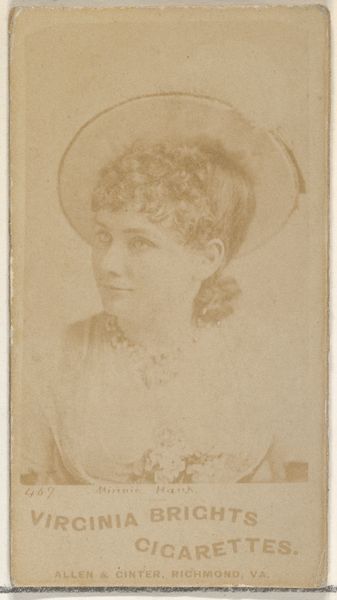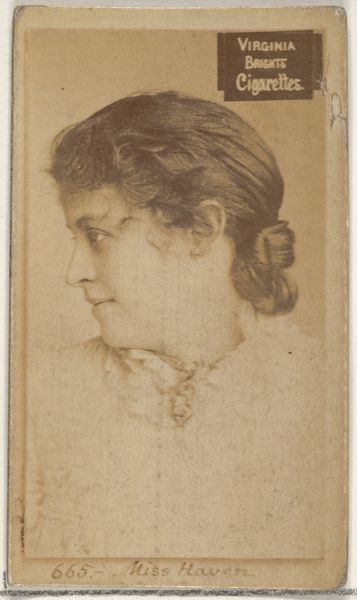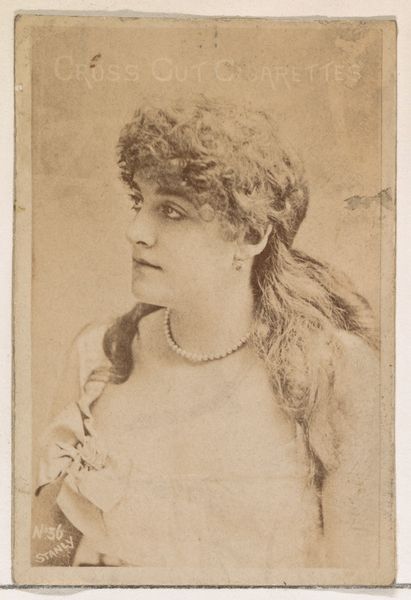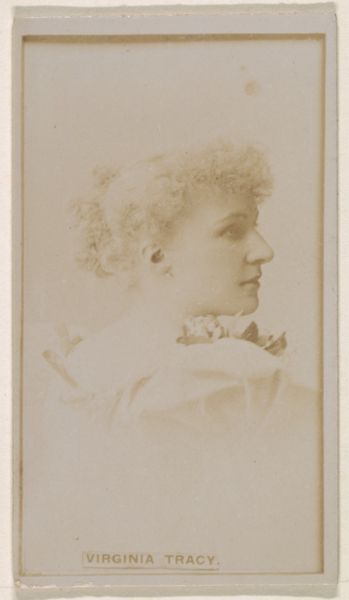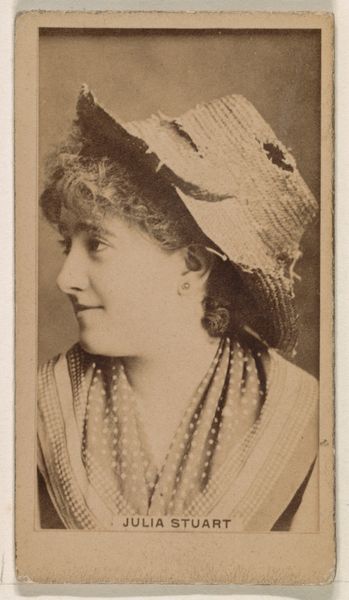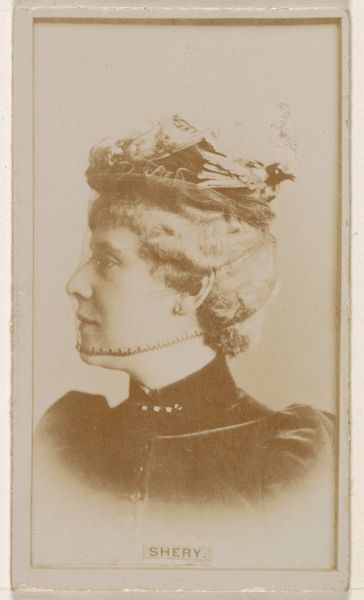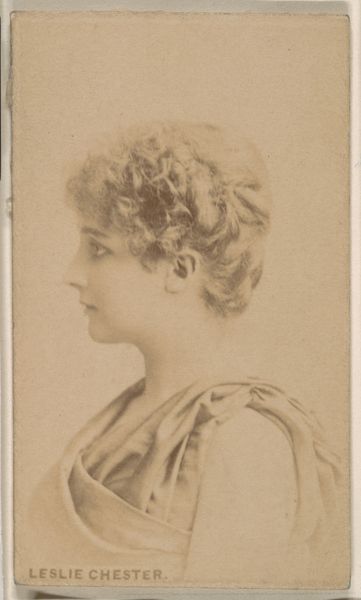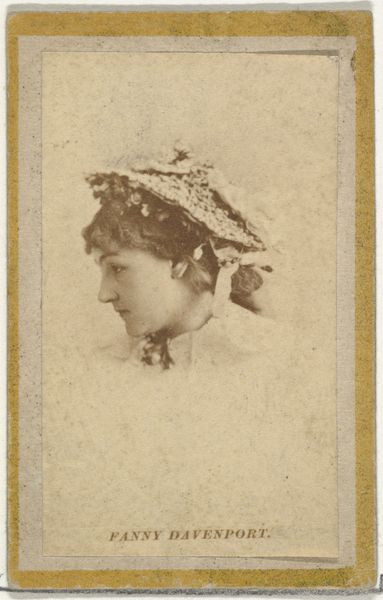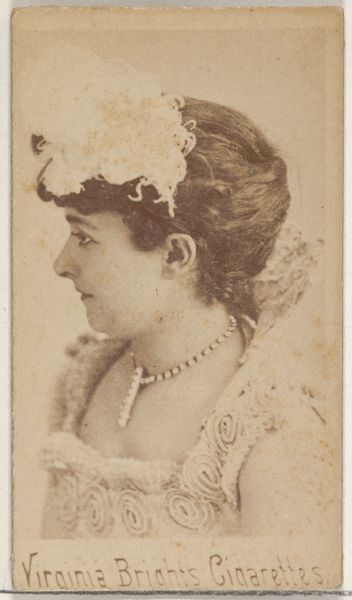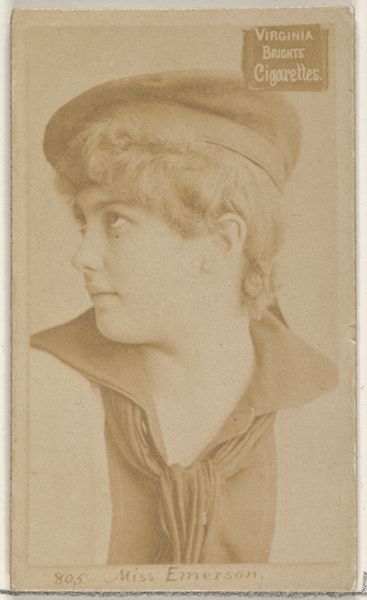
Molly Fuller, from the Actors and Actresses series (N45, Type 8) for Virginia Brights Cigarettes 1885 - 1891
0:00
0:00
drawing, print, photography
#
portrait
#
drawing
#
still-life-photography
# print
#
photography
Dimensions: Sheet: 2 5/8 x 1 1/2 in. (6.6 x 3.8 cm)
Copyright: Public Domain
Editor: Here we have "Molly Fuller, from the Actors and Actresses series" printed between 1885 and 1891. It’s a delicate sepia print from Allen & Ginter, quite small…almost feels like a keepsake. It’s a portrait, but seems different than the grand paintings of the time. What makes this unique, in your opinion? Curator: It's important to consider its origin: a cigarette card. Think about that mass production, the industrial printing techniques involved in churning out thousands of these images. How does that contrast with, say, a unique photographic print made with careful hand? This wasn't intended as high art; it was designed to be consumed and then often discarded with the pack. Editor: So the materiality itself defines it? Curator: Precisely! This is also labor, and it is wrapped in a growing culture of consumption. These were cheap materials reproduced en masse as premiums in a newly industrial tobacco market. We also need to note this image served the economic interests of Allen & Ginter. Can you see that difference in the materials versus a salon portrait? Editor: I can. The mass-produced aspect gives it a totally different context, almost… disposable, unlike a unique photograph that was treasured. Thinking of its intended use changes how I see the image itself and how I understand Molly Fuller's place in it all. Curator: Exactly! Seeing art this way is important; it takes art off the wall and puts it into daily practice and within the economy of life and leisure. It is a tiny but loaded piece of material culture. Editor: Thank you. I’ll definitely remember to look at the broader methods of making next time!
Comments
No comments
Be the first to comment and join the conversation on the ultimate creative platform.
